In December, Jonathan Thompson, the roving contributor and former editor for ‘High Country News,’ offered his latest musings on the Bears Ears controversy from his home in Bulgaria. Responding to an op ed in ‘The Deseret News’ by Utah’s Governor Gary Herbert, Thompson concluded that:
“(the governor’s) talking points probably originated with Jim Stiles, of the ‘Canyon Country Zephyr,’ who has been railing against the monument for some time.”
Thompson writes:
“(Stiles’) implication is that monument designation is meaningless when it comes to actual preservation, and is really no more than a marketing trick intended to attract industrial-grade recreation and boost the tourism and amenities economies of nearby towns. It protects nothing on the ground, and only draws more people — maybe even paved roads, parking lots and visitor centers — and therefore more damage.”
Though he condenses almost 30,000 words of research and fact into a few lines, ignores the most important information produced, and dismisses all of it as “railing,” Thompson even concedes, “These points are valid.” But then he adds, “…they are also flawed.”
The rest of his article is an attempt to marginalize and degrade those “valid” points without ever mentioning what they are. And to find the flaws, he explains, one “must travel about 145 miles southeast of Bears Ears monument, to the San Juan Basin of northwestern New Mexico.”
It’s a straw man argument that diverts the discussion away from the Bears Ears issue. But okay, for a few moments, let’s take the 145 mile journey.
* * *
Thompson describes conditions on one of the most energy-rich pieces of federal land in the Lower 48. For over a century, the San Juan Basin has been a major producer of oil, is home to the largest coal-bed methane field in the world and ranks second globally in total gas reserves.
But energy wealth has come at a price—health and safety issues have plagued the area”s residents for decades and energy infrastructure has disrupted homes and communities. In 2014, NASA researchers identified a 2500 square mile “methane cloud” over the San Juan Basin and attributes it primarily to “established gas, coal, and coal-bed methane mining and processing.”
Despite the health risks and socio-cultural disruptions, the issue is not as black and white as Thompson spins it. While the area has indeed been a toxic nightmare for many, the Four Corners has also suffered economically for decades. And the hard fact is, the jobs created by the energy industry generate some of the highest wages in the Navajo Nation. In addition, many Navajos have benefited from leasing their lands for oil exploration.
As the web site “NM InDepth” recently reported, a Counselor Chapter House meeting, “provided a glimpse into tensions in several small Navajo communities near Chaco Canyon over an uptick in fracking in recent years…The conflict between Navajo Nation residents who’ve leased their land and those who haven’t was evident throughout the meeting”
In nearby Page, Arizona, where market forces are about to shut down the 40 year old, coal-fired Navajo Generating Station, both the Navajo and Hopi nations face an unprecedented financial crisis. According to an NBC News report, the shutdown will directly or indirectly terminate more than 3000 jobs, many with salaries exceeding $100,000 a year, and it will end coal royalties in the millions of dollars. Almost 87% of the Hopi general budget comes from coal.
Now, for the first time, even Hopis are pursuing the gambling/casino option as a way to make up lost revenues.
The painful choices that Native Americans face in the Four Corners area reflect the difficult options many Americans confront. Men and women will endure hardship and even future health issues to provide for their families, and will certainly prefer a $75,000 annual salary over a job as a clerk at McDonald’s or the local casino. While environmental activists would like the general public to believe that Native Americans unanimously oppose any kind of fossil fuel extraction, it’s just not true.
* * *
But—finally— back to the Bears Ears and Thompson’s search for “flaws.” He finally acknowledges:
“Of course, Bears Ears is not the oil and gas hotspot that surrounds Chaco. At least not yet.”
Except for his politically-driven “not yet” caveat, he’s right. Geologists don’t believe there are commercially recoverable quantities of oil and gas under the Monument Upwarp that underlies the vast heart of the Bears Ears region. Federal land managers agree. The Grand Canyon Trust agrees. Even most San Juan County locals and the State of Utah Geologic Survey share that opinion.
(AND NOTE: While there is broad consensus that oil and gas potential is low under the vast heart of the monument at Cedar Mesa/Grand Gulch, there is still a vocal minority in San Juan County that believes every square inch of public land should remain open to the possibility of energy extraction, no matter how low the potential. While issuing leases will not change the fact that profitable oil development is unrealistic, leaving those lands technically vulnerable to exploration would give credence–justified or not–to environmentalists’ concerns. Ultimately, such actions by the locals could be counterproductive to their own cause.)
And at one time, even Jonathan Thompson agreed. On the day after President Obama proclaimed the monument, Thompson wrote in HCN:
“With the exception of the Aneth oil field and the Daneros uranium mine — neither of which are in the monument — the extraction industries in San Juan County were long ago wiped out by market forces.”
Exactly. At the time, Monument supporters like Thompson believed that local opposition would rebel against such pessimistic energy assessments. None expected the State of Utah and most of the local population to mostly agree with them. Now, Thompson and others have no choice but to revise their own comments. Instead of standing by the facts, they’re trying to re-invent the very energy extraction risks that they said were unrealistic and even absurd, just eleven months ago. More straw man arguments.
In further search of flaws, Thompson continues:
“Besides, a monument does far more than just keep looters or drillers at bay. It gives federal land managers more leverage to limit visitation, to steer people away from the most sensitive sites…”
Here Thompson all but dismisses the effectiveness of the 1979 law, enacted by Congress, called the Archaeological Resources Protection Act (ARPA). His most recent article doesn’t mention ARPA at all. Here are the facts…
* National Monuments are created via the Antiquities Act of 1906. The laws contained within that act to protect archaeological resources were so weak that in 1979, Congress passed ARPA, finally giving federal land managers the authority to provide severe penalties for antiquities violations.
* ARPA covers ALL federal lands, including ALL the lands that were included in the original designation,’ and all 100,000 sites within the area, “not just major sites,” as Thompson infers. In short, monument status did nothing to “keep looters at bay.” When monument proponents scream that the monument reductions “removed protections,” it’s not true.
Once, in a previous HCN article, Thompson mentions a remote archaeological site on Cedar Mesa and inexplicably argued that ARPA was ineffective in part because “someone could dig up the (site) in broad daylight and cart away backpacks full of artifacts, possibly with impunity, since BLM rangers, stretched so thin out here, probably never venture down this little, old road. ” But he never explains why monument status would improve the situation. What he fails to mention is that in 2018, the major sites are just as vulnerable today because BLM protection has declined significantly.
What sensitive areas like the Bears Ears region needs is “boots on the ground” protection, rangers in the field with the authority to enforce the ARPA law. Both Democratic and Republican administrations have allowed funding for the area to shrink to almost nothing. Forty years ago, there were more rangers protecting these resources than there are now. Why? Why haven’t Thompson or HCN asked the question?
* As for Thompson’s notion that monument status will “provide leverage to limit visitation, to steer people away from the most sensitive sites,” he needs to visit Moab or any of the other national parks across the west that are being overwhelmed by record numbers of tourists, where the resources are being hammered and vandalism is at a record high.
To counter the overwhelming tourist visitation, the National Park Service is proposing $70 entrance fees and required reservations at Arches National Park and other Western parks. Is this kind of “leverage to limit crowds” that Thompson had in mind?
He and others in the mainstream media have, to a great degree, steered clear of the Industrial Recreation aspect of this debate. With out-of-control tourism reaching crisis levels, they may squirm uncomfortably with “solutions” like $70 entrance fees, but where were these writers and activists 20 years ago when the issue could have been addressed before it was too late? And where are they even now?
Anyone coming to Grand County, Utah can see the devastating effects of unleashed marketing campaigns by the outdoor industry. National parks and monuments have become little more than marketing brands to the detriment of the very places these outdoor industry enviropreneurs claim they want to protect.
In 2017, trying to distinguish between mainstream environmentalists and the industrial recreation economy is virtually impossible. Lucrative alliances over the past two decades have seen to that. Those same industrial recreation corporations are in the process, as I write this, of effectively buying the heart and soul of the recently incorporated town of Bluff, Utah.
Just recently, The Zephyr received a leaked memo, written by a board member of the pro-Bears Ears environmental group Friends of Cedar Mesa in Bluff. The draft memo referred to a proposal to sell “secret hikes” to sensitive archaeological sites in the area for $10,000, as FCM tries to raise money in Bluff for an “education center.” The board member complained, “I am totally repulsed (first word choice), disappointed, maddened, angered.”
He noted that, “This is the marketing strategy of Backpacker Magazine – ’10 best secret hikes in Utah!’ and worse. I am NOT willing to have FCM be seen as an organization willing to sell secret sites to $10,000 donors.”
Friends of Cedar Mesa has depended heavily on donations from outdoor industry giants like Patagonia and North Face; the memo-writing board member questioned FCM’s executive director’s relationship with Patagonia and even suggested he’d “gone rogue.”
While The ‘Deseret News’ reported the memo, neither Thompson nor ‘High Country News’ even gave the story paragraph of coverage.
What many San Juan County residents fear is what I fear—I wrote about it almost five years ago in an article called: “Moab is Assimilated—Bike Borg Moves South (Is Resistance Futile in San Juan County?).” Moab is gone and the adjacent public lands are being impacted in ways we never could have imagined 25 years ago. Thompson avoids the subject.
* * *
And finally, Jonathan Thompson gets to the heart of this political fiasco and for once, he and I agree. He writes:
“Of course all of that depends upon a strong management plan, which will now be crafted under a Trump administration, for whatever that’s worth.”
That’s right. The debate about Bears Ears raged through the summer and fall of 2016. Everyone assumed Hillary Clinton would win the election and that the monument proclamation and subsequent full funding would follow. Then November 8 happened and there was just as much consensus that a Trump administration would take an entirely different view of public lands management and would almost certainly challenge the validity and size of the new monument.
The environmental/industrial recreation community knew this. They knew rescinding or reducing the monument was a possibility. They knew that fully funding the monument was a virtual impossibility. There was an opportunity for them to set aside their political agenda and put the best interests of the resource itself ahead of their own.
And there were options. I outlined them in an article titled “A Bears Ears Alternative Solution.”
So what action did the enviro-industrial recreation community take? With massive advertising and media relations budgets, they initiated coast-to-coast campaigns to, in effect, make “Bears Ears” a national household word. The Outdoor Alliance and corporations like Patagonia, in cahoots with organizations like SUWA and the Grand Canyon Trust, continue to pump millions into the effort.
And with little information from the media to balance the discussion, uninformed editorial boards from New York to Los Angeles contributed their own bias to their readers. Now millions and millions of Americans believe that these public lands have been “stripped of all protections” and await “imminent destruction” from “Big Oil” and other assorted demons.
The actions by the enviro-industrial recreation machine will, in the long term, bring more damage and disruption to the land they claim to love than anything that preceded them. But they’ll never admit it, any more than the mainstream environmental community will. It was after all, Utah environmentalists who expressed alarm at the potential destruction from “Industrial-Strength Recreation” twenty years ago, but who have suppressed their concerns ever since, to satisfy the profit margins of the outdoor industry. In 2018, environmentalists even flee from their own words.
* * *
Thompson meekly concludes, “So monuments do have tangible meaning, they do add another layer of on-the-ground protection against a variety of threats.”
And then, he adds, “But they are also symbolic.”
Really? All this fire and fury, the threat of lawsuits, the never ending vitriol, the cruel and unfair assertion by environmentalists that anyone who opposes the monument is a racist, the millions and millions of advertising dollars spent by the outdoor industry to promote its self-serving agenda—all of this brutal polarization— for some nebulous symbolism? Has it really been worth it?
Ultimately, Thompson’s piece attempts to be a rebuttal to a handful of the “valid points” he conceded I had made in many Zephyr articles, but then never offers in any detail what those valid ideas are. And never mentions the rest of them.
What about saying them out loud? How about strongly emphasizing for the first time—
* that hundreds of thousands of acres of public land that were included in the original monument proclamation are also designated BLM “wilderness study areas” and, as such, are provided the very highest level of protection. And that the federal lands included in the monument were, and are, and will be protected by a myriad of federal protections that at one point Thompson referred to only as “sundry other laws.”
* that the original proclamation did not give Native Americans any legal authority to manage the monument and that their only real designated role is as an advisory panel.
 * that one of the most vocal Utah Navajo supporters of the monument, Mark Maryboy, also sits on the board of directors of the Southern Utah Wilderness Alliance. And that his brother, Kenneth Maryboy, has been an enthusiastic booster for Industrial Tourism, including the monstrous and hopefully now defunct “Grand Canyon Escalade.”
* that one of the most vocal Utah Navajo supporters of the monument, Mark Maryboy, also sits on the board of directors of the Southern Utah Wilderness Alliance. And that his brother, Kenneth Maryboy, has been an enthusiastic booster for Industrial Tourism, including the monstrous and hopefully now defunct “Grand Canyon Escalade.”
* that the massive increases in tourism and the effects of “Industrial Recreation” are having a critical impact on the very resources that proponents of the monument allegedly want to save.
* that the environmental community has ignored those tourism impacts for 20 years and have now become so closely aligned with, and indebted to, the powerful outdoor industry lobby that environmentalists have rendered themselves utterly impotent to object to those impacts.
* that, in addition to their incestuous partnerships with the Outdoor Industry, the mainstream environmental community has filled its boards of directors with some of the wealthiest billionaire industrialist/venture capitalist/financier benefactors on the planet–like Hansjorg Wyss, David Bonderman, and Bert Fingerhut—. and in the process, have boosted their coffers and compromised their original values as well.
* that monument designation has become little more than a marketing tool to generate tourism revenue, to re-shape the economies of the Rural West and ultimately to change their demographics.–that urbanizing the West is an ultimate goal for the outdoor industry and for the mainstream environmental community.
* and, finally, that Industrial Recreation depends on the massive consumption of energy to even exist. For it to thrive as most “progressive environmentalists” want it to, the tourism industry’s demand for energy is insatiable.
This should be a key point. At the end of the day, Thompson and mainstream environmentalists advocate for the elimination of energy exploration on as much federally managed land as possible, while casting a blind eye to an out-of-control recreation economy that is transforming the West. They refuse to even acknowledge the hypocrisy. Again…here’s what the American author Wendell Berry once observed:
“…this is what is wrong with the conservation movement. It has a clear conscience….To the conservation movement, it is only production that causes environmental degradation; the consumption that supports the production is rarely acknowledged to be at fault. The ideal of the run-of-the-mill conservationist is to impose restraints upon production without limiting consumption or burdening the consciences of consumers.”
If environmentalists want to push for the shutdown of energy production in the West, they must also accept responsibility for the demand. Like I noted in a Zephyr article last April, if environmentalists and the media want to be taken seriously, they must acknowledge that “Industrial Strength Recreation” poses a serious and devastating threat to wilderness lands in southeast Utah and elsewhere. Second, they need to disassociate themselves from the outdoor industry. Otherwise, their complaints about energy production are laughable.
(And in 2018, as the cost of a barrel of crude oil climbs upward again, and with predictions that high gasoline prices will severely depress the tourist economy, how will environmentalists deal with that contradiction?)
* * *
It should be noted that ALL of this information was and is available to Thompson and to ‘High Country News’ and can hardly be considered new or previously unknown. It simply isn’t being reported. And my own efforts to see some of these issues raised in the pages of ‘High Country News’ have been mainly rejected out of hand.
Thompson’s own views on Bears Ears were made clear in one of his blog entries from 2016. In the process of covering the story for HCN, he concluded that the citizens of San Juan County, Utah were simply selfish. He wrote:
“…it’s upsetting, even offensive, to hear the folks from San Juan County, Utah — particularly those opposed to a Bears Ears National Monument — discount the opinions of those who aren’t ‘local.’ According to their reckoning, the only people who have any say over the land that lies within their county are the people who live there or, apparently, in the state of Utah as a whole.”
Here are the facts.
Only 8% of San Juan County is privately owned. EIGHT PER CENT.
A quarter of the county is also a part of the Navajo Nation. Almost two-thirds of the county is publicly owned and managed by the federal government. In addition to the national monument being debated here, it includes Canyonlands National Park, Glen Canyon National Recreation Area, Hovenweep National Monument, Natural Bridges NM, Rainbow Bridge NM, Manti-Lasal National Forest and millions of acres of public lands administered by the BLM. Another percentage is administered as Utah State Trust lands
ALL of these designated lands reside completely or in part, in San Juan County.
It’s been like this for decades. How could anyone suggest, given the reality of public lands in San Juan County and across the Rural West, that the “locals” want it all for themselves? Of course, many of them are angry and weary of the dominance of federal control in their county. Whether their anger is justified or not continues to be debated and has been since I first arrived in Southeast Utah, almost 50 years ago.
In the end, the issue of Bears Ears and national monuments, and public lands, and the wisest and best use of those lands should be debated honestly and fairly, with all facts on the table. In Thompson’s ‘High Country News’ article, as has happened so often before, in so many other publications, has employed diversions, filtered facts, and most often—omissions— in an attempt to discredit honest reporting.
NOTE: High Country News is welcome to re-print this reply to Thompson’s article. They don’t even have to pay me…JS
POSTSCRIPT In addition to his duties at High Country News, Thompson has recently written a book about the 2015 Gold King Mine disaster in Colorado. It is published by Torrey House Press, whose founding publisher, Mark Bailey, has been quoted extensively in two other Zephyr articles: “The Unspoken Bears Ears Goal—Creating an Urbanized ‘New West'” and “The New West’s Big Lie.”
Jim Stiles is Founder and Co-Publisher of the Canyon Country Zephyr.


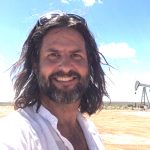

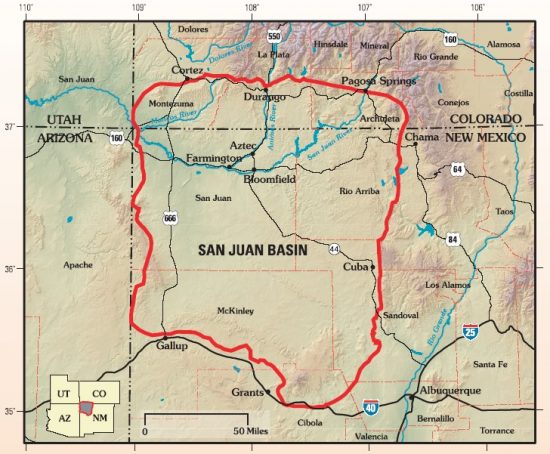
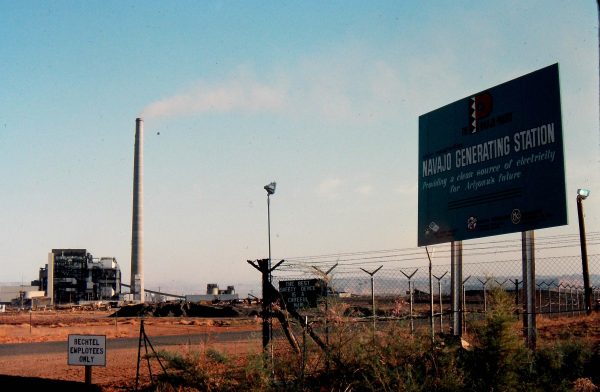
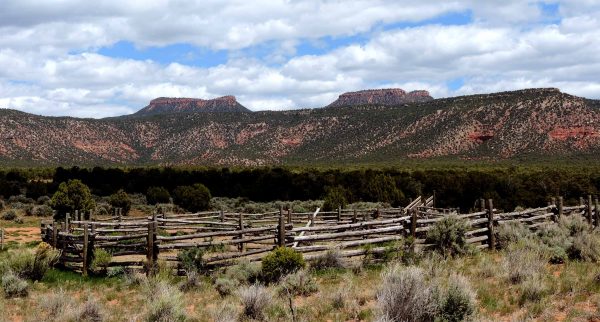

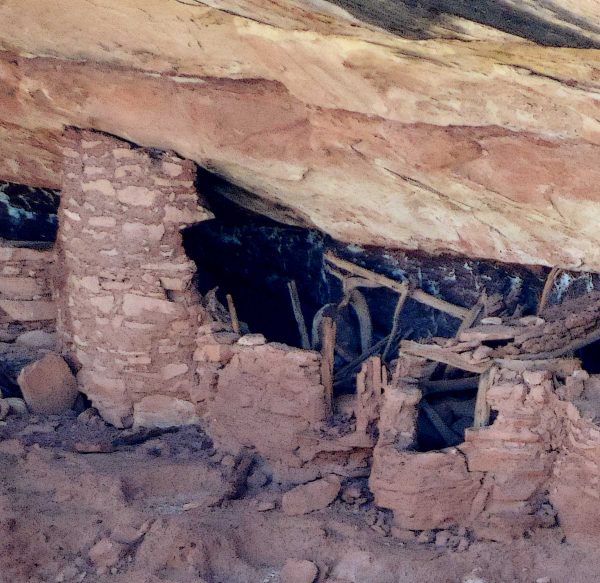
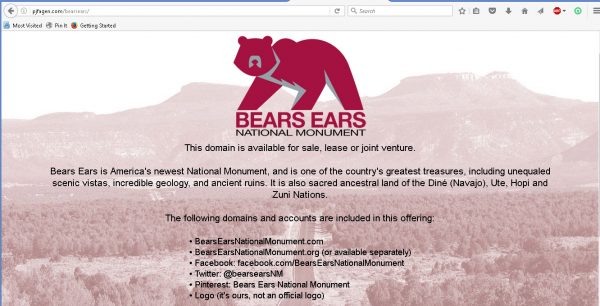

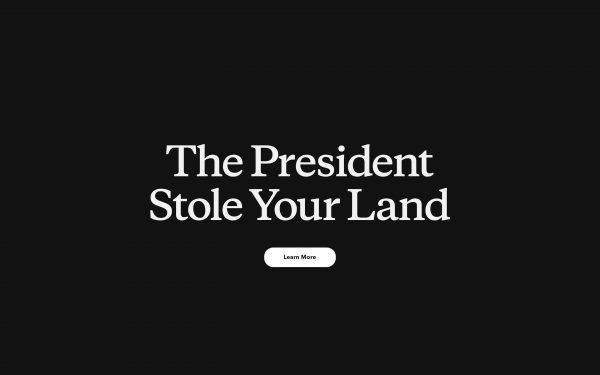
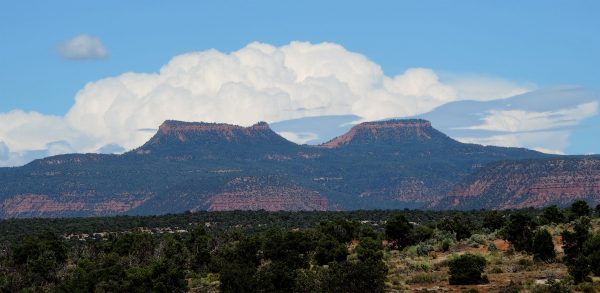
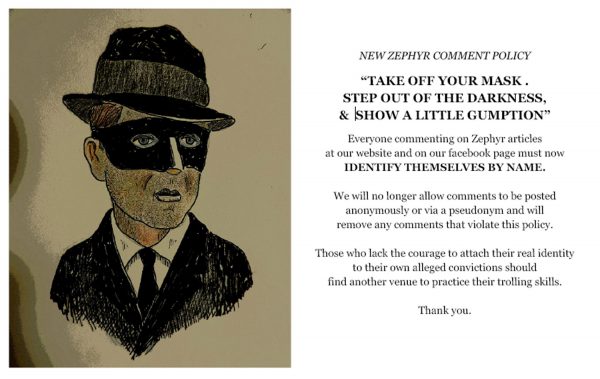



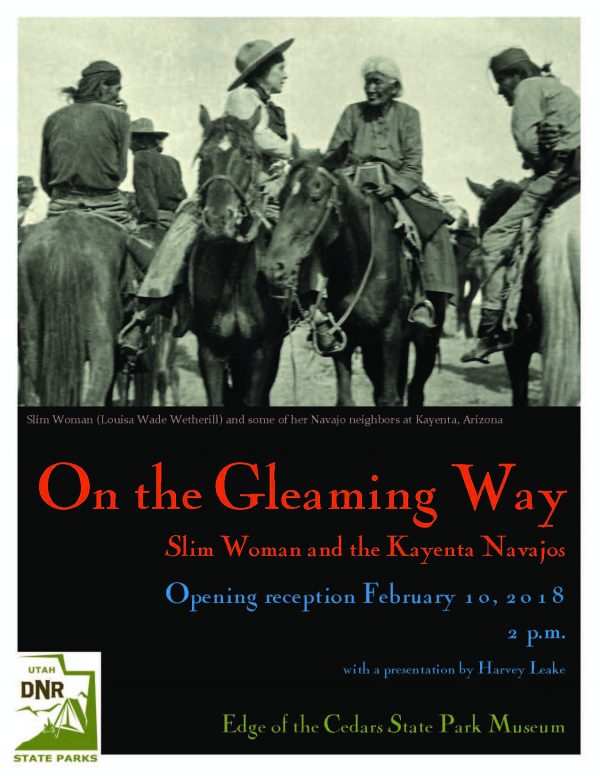
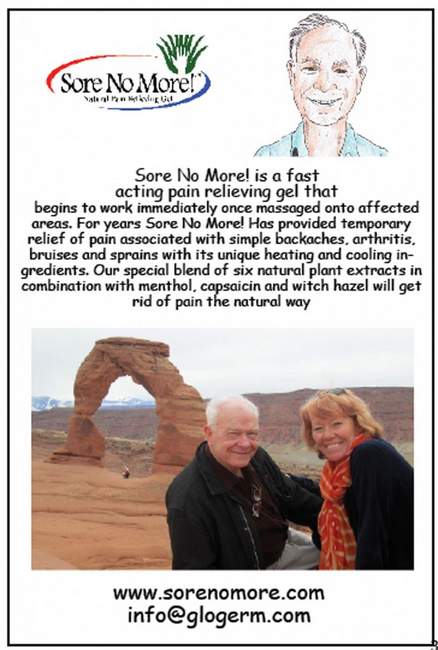
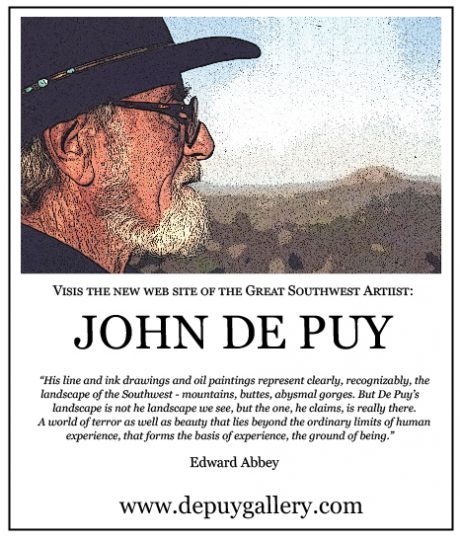
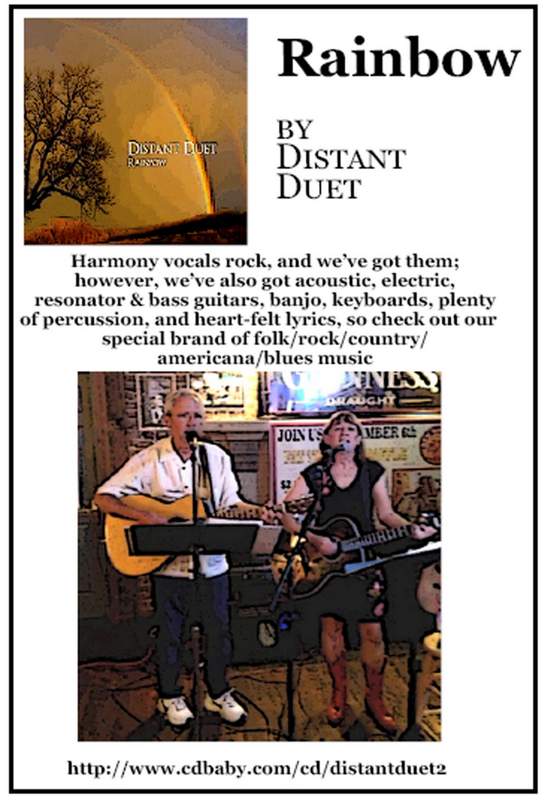
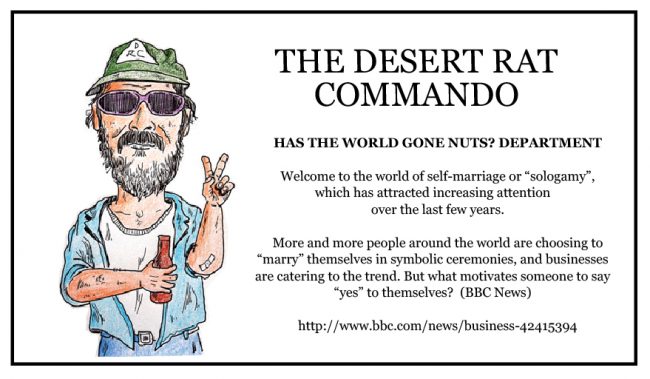
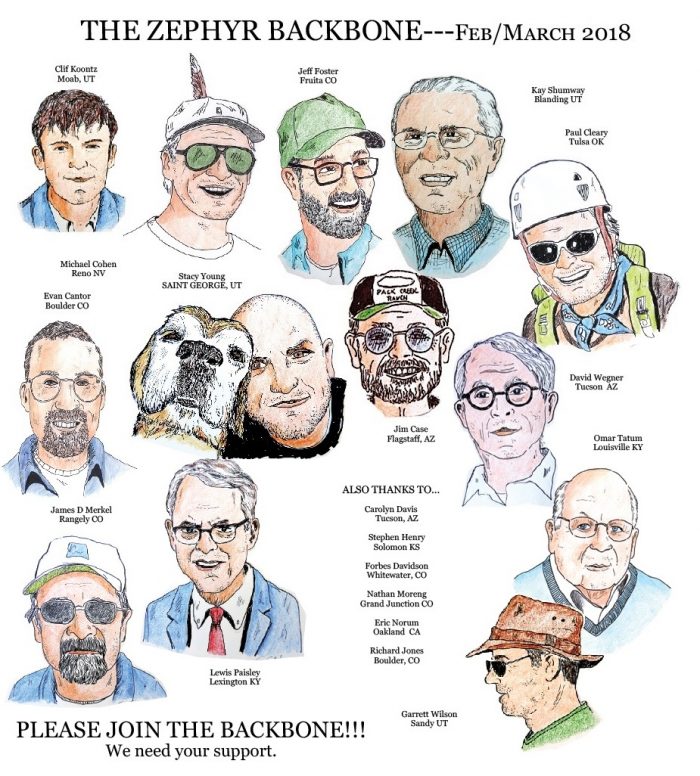
Once again, Jim, you tell it like it really is. When we visited San Juan County in 2016, Moab in particular, I was appalled at the size of November crowds in Arches. We’ve visited other times as well, our feet trampling the treasured earth along with thousands of others. What I noticed, especially with younger visitors, is the lack of respect for the wildlife and for others’ experience in the park. College-aged people chasing after the deer to “et Bambi” as well as the dumb blond who needed to share her tunes with all of us ruined my experience at Delicate Arch. But then, I’m a grumpy old lady who just wants peace and quite in a special land.
Your stories on Bears Ears provides continuing evidence of a radical middle…and that a realistic assessment of both ends of the political spectrum makes you unwelcome ambassador of reason in any discussion or negotiation. More power to the radical middle! As for High Country News, it was really cool in the old days, but like so many others in the media business, I think their primary concern is to sell more papers and get ‘re-elected’ to pay themselves. Unfortunately, the narrative HCN has adopted is the one you identify, far left concerns versus the far right, both failing to recognize the whole shebang. On top of this, HCN long ago realized that pessimism (read: realism) doesn’t sell.
The lies and propaganda being spewn by these groups is absolutley beyond belief to me. A complete brainwashing of the general public, who have no knowledge or frame of reference for public land management, believe whatever thier “friends” groups or environmental organization tell them, and then mindlessly spew their “experise” across the social media spectrum. It’s just mind-numbing. Absolutley impossible to have a fact based debate. To these people, any means justifies their ends. Sadly it’s the same with what we see playing out in our main stream media. Goebbels would have loved it all…. Keep at it Stiles, you’re the last one with the ability and endurance to keep at it!
RE: Backbone. Hey! I’m not Stacy Young. I’m Michael Cohen.
And so it goes, Jim. My area here in Kentucky appears to be a microcosm of this situation in Utah.
Please view my open letter to the author of the new guide book out, “The Best Homes in Bears Ears National Monument ” by Morgan Sjogren, published by Colorado Mountain Club. Please share. http://crystalmuzik.blogspot.com/2018/01/open-letter-to-morgan-sjogren-aka.html
**best **hikes
It’s a convention of responsible journalism to allow rebuttals. Jim Stiles’ perspective has been missing from HCN – even when personally targeted – to the extent that, in my opinion, it amounts to censorship. The fog of misinformation and outright lies that surround creation of BENM is directly connected to media outlets, such as HCN, that refuse to publish points of view that might differ from their own.
I am unclear why the editors of HCN allowed Thompson to tee off on Stiles? What was gained? Other than a chance at demonization.
The first sentence of the second paragraph could’ve just as easily omitted all references to Stiles and began with “Herbert echoes similar sound bites among the anti-monument crowd.”
It can’t get any more frank and direct than this delineation of what is true and what is manipulation. Such an orchestration of misleading falsehoods, paid for by those who claim to love the environment, seems both tragic and ironic. Thanks for a gutsy rebuttal, Jim.
Hey, Jim, thanks for putting my name in the Zephyr headline lights! A lifelong dream, for sure. I’ve sent you a letter to your home in Nebraska, or wherever you live, regarding a number of points in your piece, and I won’t go through all that again here.
I would like to quickly clear something up, though: I did not attack you. And to misconstrue that sentence as an attack is either crazy or ignorant. I actually gave credit where credit is due. The strongest argument against a monument is that there are plenty of protections already in place, rendering a monument superfluous, and that a monument will, in fact, just draw more people and more damage. I may be mistaken, but I believe that you, Jim Stiles, first brought that argument to the public eye, not Gov. Herbert, and not any of the others out there who are using that argument. If someone else came up with that argument first, my apologies to them.
As for the other points you made, I’d just suggest that you and your readers take a look at the rest of the tens of thousands of words I’ve published on the Bears Ears issue. I think an honest reading will reveal far more nuance than you let on in this rebuttal. You can start here, in a piece called “The Trouble with Monuments,” from 2010. http://www.hcn.org/blogs/goat/trouble-with-monuments/
And an in-depth cover story, here, in which Winston Hurst makes some excellent points against monument designation: http://www.hcn.org/issues/48.18/the-bid-for-bears-ears-national-monument
And to find a whole bunch more, just go here: http://www.hcn.org/voices/jonathan-thompson
Thanks for listening.
Sincerely,
Jonathan Thompson
First, nice to see Jonny over here.
Second, I wouldn’t mind seeing Stiles get space over there, per Bill.
That said, Bill, Jim CAN simply post HIS OWN comment on Jonny’s latest piece, with a link or two, like Jonny did here. It may not be perfect, but it’s something.
===
As far as what part of teh problem is?
I’m going to expand on a comment I put on another new story of Jim’s, and loop Jonny in too.
Jim, you’re missing the forest for the trees, IMO.
The real problem isn’t “amenities tourism.”
It’s too much capitalism.
I’ve lived in the Permian Basin, and I know what oil, among other extractive industries, can also do to an economy.
The related problem is not enough local regulatory action.
Why didn’t Moab pass a minimum wage above the Utah minimum, years and years ago?
Why didn’t Grand County pass county zoning in unincorporated areas?
Your real fight needs to be against hypercapitalism and antiregulatory stances.
In other words, you need to become more of a social democrat if not a full socialist.
I mean, the West has been exploited since before the days of the transcontinental railroad.
At the same time, “the West” is the most urbanized portion of the US today. That’s because as Powell himself knew, the West can support only so many rural people. IMO, both Stiles and Paul Larmer over at HCN are promoting a myth of the West at times as much as they’re promoting a reality.
(And, if climate change models are right, 30 years from now, the Colorado will have 1/3 less water and Lake Powell will be dead pool anyway.)
Want to add that a full ARPA protection unit would be great.
Are you going to get 500 BLM enforcement rangers to really do that, given the cultural mentality of BLM?
What are you going to do when a Bundyville happens?
To “Socratic Gadfly”–You wrote: “That said, Bill, Jim CAN simply post HIS OWN comment on Jonny’s latest piece, with a link or two, like Jonny did here. It may not be perfect, but it’s something.”
No…that’s not true. HCN currently allows four free articles to non-subscribers a month. Until recently, I was unable to read ANY HCN articles online and I don’t know why. Friends of mine cut and pasted Thompson’s article and other related essays by JT to me.
For 25 years, HCN and The Zephyr comped each other subscriptions. A few years ago, they discontinued mine. Since The Zephyr is free online to everyone, I guess HCN thought it wasn’t getting a good deal.
As for commenting, nope. Even now, when I could access my four free articles, HCN ONLY allows paid subscribers to comment. That means that not only could I not reply to Thompson’s piece, I could not even reply to comments left by HCN readers to the one and only essay that HCN, via Writers on the Range, agreed to publish last year.
Several years ago, I was told by HCN that they would not publish any articles by me that mentioned some of the information that was contained in this article. I finally wrote the publisher who thought I raised intriguing issues and urged me to write a book, without ever addressing the topics I hoped HCN would consider in its publication. Several years later, that unspoken policy stands.
When I asked for equal time to reply to a WOTR essay by Luther Probst about the joys of a New West economy, the editor replied, “Sorry. Not for me.” Eventually it was published in Salt Lake City ‘The Deseret News’ and the Grand Jct “Daily Sentinel.”
So, Socratic Gadfly, those are the facts re: my opportunities to respond to Thompson via the publication where his story was posted..
Jim,
Yeah, I forgot about HCN’s new paywall. Sorry about that. Anyway, you are still welcome to write a letter to the editor to HCN. And you are still welcome to submit your work and subject it to the same editorial acceptance/editing process as everyone else.
As for the links I posted up above ^^ if any of y’all are interested in reading the articles but get caught up in the paywall, feel free to click on my profile and contact me through my personal website and I’ll send the pieces your way.
Thanks,
Jonathan
Jim, Mr. Thompson says you’ve been “railing against the monument for some time”, so maybe he’s correct when he says he didn’t “attack” you. However… this characterization of your efforts clearly indicates contempt for your argument. Perhaps he’d like to apologize “if” he offended you without intending to do so? With or without an official apology, it’s just another case of factual reportage being dismissed as radical lunacy.
Mr. Cantor,
Yes, you’re right about making an apology. This is what I sent to Jim: “If you feel like my mention of you was an attack, I truly apologize. It wasn’t. I was trying to give credit where credit’s due: The argument that a national monument will not add any meaningful protection atop the many layers of current protective rules and regulations, and will instead just invite more damage, is a common one among those who oppose the monument. And, as I wrote, it’s a valid argument — though I disagree with parts of it. I’m pretty sure that you are the first one to use the argument. I felt like I would have been remiss to not attribute it to its creator.” Hopefully my mention of the Zephyr by name brought another reader or two to a publication that I’ve always admired.
Nor was the word “railed” used to signal contempt. I’ve railed against plenty of things, including the amenities economy, the housing crisis, greedy corporations and Interior Secretary Ryan Zinke. There’s no shame in railing, so long as it is substantive and doesn’t sink to personal attacks against non-public figures.
I don’t have contempt for Jim’s argument, and I don’t even totally disagree with it. I think there are elements missing from it. I don’t agree that current federal laws and regulations are adequately protecting our public lands. I explained why in more than one piece. I don’t know that a monument is the ideal answer to these inadequacies — that will depend largely on the management plan, funding for the monument, and the like. I believe that a monument, especially one that has strong input from the tribal coalition, can accomplish things aside from preservation, such as introducing Pueblo, Navajo, and Ute interpretations of the cultural landscape. And I also think there should be acknowledgment that, with a good management plan, a monument could stymie industrial recreation, not open up the gates to it. Canyon of the Ancients is a good example of how visitors can be funneled to one area, while leaving much of the rest undisturbed.
Thanks.
Okay, I’m not going to spend a lot more time on this…Life’s too short, but to at least address a few of Jonathan’s posted comments…
1. Thompson wrote: ” I was trying to give credit where credit’s due…. I felt like I would have been remiss to not attribute it to its creator. Hopefully my mention of the Zephyr by name brought another reader or two to a publication that I’ve always admired.”
This is just silly, or what somebody called “squishy dodgy.” In the article, Thompson wrote that “(the governor’s) talking points probably originated with Jim Stiles, of the ‘Canyon Country Zephyr,’ who has been railing against the monument for some time.”
The ONLY reason to mention me was to link my views to a conservative political leader in Utah that stands diametrically opposed to Thompson’s own views re: Bears Ears NM. In other words, he was either suggesting that I’ve become a shill for Governor Herbert or, less likely, that the Governor has become a shill for me. He wasn’t trying to “give me credit.” It was yet another effort to discredit from the first paragraph..Five different people contacted me about his article–three are against the Big Monument, two were for it. ALL of them thought it was a tad tacky.
How many Big Monument supporters were going to give my arguments any credence, or even the benefit of the doubt, after that obviously misleading and prejudicial introduction?
2. He wrote: “I don’t even totally disagree with it. I think there are elements missing from it.”
The only reason I responded to Thompson’s article was my ever growing frustration with writers like him and the tonnage of “elements” that they have managed to mostly avoid discussing. All one has to do is to return to the article and see what elements I’m referring to.
And if he doesn’t “totally disagree” with me, I’d love to hear in specific detail what they are—in High Country News.. Point by point without resorting to vague generalities. Again, I refer him to the list…and I have more specific “elements” if he wants them.
3. Thompson wrote: ” I don’t know that a monument is the ideal answer to these inadequacies — that will depend largely on the management plan, funding for the monument, and the like.”
Exactly. Knowing that Trump would take the reins of power on January 20, how much funding and what kind of management plan for a 1.35 million acre national monument did he think the new administration was going to provide? Otherwise, wasn’t President Obama’s December 28 proclamation really nothing more than “in-your-face” political theater, Patagonia ads, and more SUWA litigation?
4. He wrote: ” And I also think there should be acknowledgment that, with a good management plan, a monument could stymie industrial recreation, not open up the gates to it. Canyon of the Ancients is a good example of how visitors can be funneled to one area, while leaving much of the rest undisturbed.”
How much marketing/advertising money has been spent promoting and publicizing Canyon of the Ancients, compared to Bears Ears? Has Patagonia, North Face, Black Diamond, Duct Tape Then Beer, et al really put their resources to work “saving” it yet?
Show me other examples of where a “good management plan” saved a park? Though to be fair to his argument, if “funneling” millions of people into tightly confined zones is Thompson’s idea of good management, AFTER doing nothing to discourage the massive flood of crowds to begin with, he may feel he has a justifiable argument.
Jim, I don’t know what the deal is, but I do know Bill Keshlear is NOT an HCN subscriber and he’s been commenting on Jonny’s piece in the last week.
++
Anyway, I would like to hear more on your “just enforce the laws” to tell me, whether Bears Ears is a national monument or not, how many additional law enforcement do you think it will take? 50? 100? 200? 500?
(Jonny, too, but I”m primarily asking Jim because ‘Just enforce the laws we have” … sounds kind of like the NRA on gun laws. And, I know the NRA isn’t actually serious about that.)
And, yeah, if not here, then elsewhere, in a new article, I”d like you to tackle what I say is the actual big issue — not amenities tourism but too much hypercapitalism in general.
Oh, forgot to add … Jim, per your “just enforce the laws,” right now, you’re at the same level of vague generalities as you accuse Jonny of having.
==
And on a related issue?
(I generally support paywalls, if they’re done in a flexible way for the best needs of the media site as well as readers.)
Gadfly, I don’t get how it makes sense to say BOTH that the real problem isn’t amenities tourism AND ALSO that the real problem is (too much) capitalism. I mean, that’s what amenities tourism is. In particular, it is an example of the late capitalism described with such insight by John Kenneth Galbraith in The Affluent Society. Below, I give you a lengthy quote from that book, because you seem interested in linking this topic to theory (which I think is fine).
Galbraith wrote: “If the individual’s wants are to be urgent they must be original with himself. They cannot be urgent if they must be contrived for him. And above all they must not be contrived by the process of production by which they are satisfied. For this means that the whole case for the urgency of production, based on the urgency of wants, falls to the ground. One cannot defend production as satisfying wants if that production creates the wants.
Were it so that a man on arising each morning was assailed by demons which instilled in him a passion sometimes for silk shirts, sometimes for kitchenware, sometimes for chamber pots, and sometimes for orange squash, there would be every reason to applaud the effort to find the goods, however odd, that quenched this flame. But should it be that his passion was the result of his first having cultivated the demons, and should it also be that his effort to allay it stirred the demons to ever greater and greater effort, there would be question as to how rational was his solution. Unless restrained by conventional attitudes, he might wonder if the solution lay with more goods or fewer demons.
So it is that if production creates the wants it seeks to satisfy, or if the wants emerge pari passu [concurrent] with the production, then the urgency of the wants can no longer be used to defend the urgency of the production. Production only fills a void that it has itself created.”
This quote may be a bit heady, but it hits New West gentrification, and the “Bears Ears” case in particular, squarely on the head. Participants in the Recreation Industrial Complex (RIC) manufactured both the demand for “Bears Ears” and the satisfaction of that demand. (As Stiles has thoroughly documented, and as even a monument proponent like Thompson must in large part grudgingly concede, there was not a single imminent threat to “Bears Ears” that was solved or even improved by its rebranding.)
More pointedly, in statistical terms, substantially no one in America had even heard of “Bears Ears” before December 28, 2006. But now that “Bears Ears” is the RIC’s “Kony 2012,” (minus Joseph Kony) the tour buses and what seems like every outdoor athlete with a shoe contract and Personal Brand to polish appear determined to make a pilgrimage to the region. The RIC alone constitutes both the demand side and supply side of the “Bears Ears” equation, which has all sorts of negative consequences both for “Bears Ears” and its gateway communities. Fine.
The thing I don’t get is that you seem to accept these political and socioeconomic dynamics as a substantially benign given and instead focus your critique of negative consequences on a weak regulatory state, in this case local government. That just doesn’t make sense to me either as a theoretical or (especially) as a practical matter. Yes, the use of zoning and the like can influence the process and outcome of development, but even the best-managed response by local government, using every trick at their disposal amounts, AT BEST, to damage control when the full weight of New West colonization reaches a town’s doorstep.
So, in short, for me, the better solution to New West gentrification is not more goods, but fewer demons, to use Galbraith’s articulation of the problem. I look to confront the demand side of the dynamic rather than the supply side. I object to the very process of commodification of the landscape by the NIC to begin with.